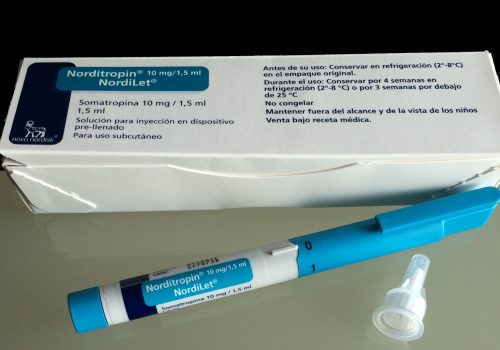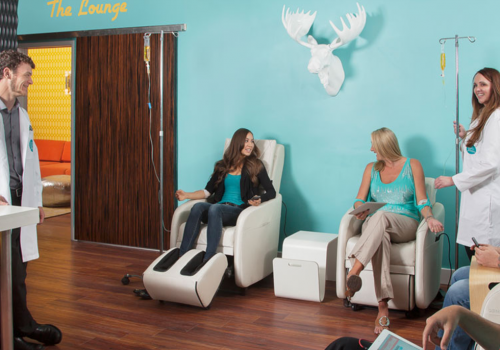STEM CELLS THERAPY
WHAT ARE STEM CELLS?
Stem cells are the main cells that can differentiate into specialized cell types and have the ability to self-renew to produce more stem cells, forming tissues and organs. Under normal conditions, there are sufficient numbers of stem cells in the human body that support natural tissue formation and healing.
However, most of the time, due to aging or different reasons, enough cells cannot reach the tissues to fully regenerate. In this sense, full potential use of these regenerative cells in the human body is realized by using autologous (self) tissues.
STEM CELL RESOURCES
Cells, which have two different types, generally known as embryonic stem cells and adult stem cells, are found in many tissues in the human body and are most intensely obtained from bone marrow and adipose tissue.
These cells interact with the cells of the given tissue in the body and differentiate into the same tissue by forming complexes with surface antigens. In these applications of tissue engineering, autologous regenerative cells are cells obtained from the patient himself and injected back into the patient himself. There is no problem such as the body’s rejection (immune reaction) in giving back his own cells to the patient and there is no need for immunosuppressive drugs. Autologous (self-made) regenerative cells are effectively incorporated into the existing structure and interact with the surrounding tissue to promote healing.
CELL THERAPY
The use of adult stem cells in humans has a long history. As a treatment, it started with the first bone marrow transplant and focused on cellular-based tissue therapy and continued as clinical studies. It has created an intensive area of use in many surgical fields, by obtaining progenitor and other regenerative cells as the end product during surgery by using point of care systems by being modified with new technology systems.
Bone Marrow Cell Concentration
As a result of damage to the human body, adult stem cells are periodically released from the bone marrow, which is the source of blood, into the blood, and these cells that reach the damaged area perform natural healing with their regeneration abilities. In order to achieve a faster recovery compared to the basal level, bone marrow aspiration is performed from the ileum (hip bone), where the bone marrow is densely located. After a special protocol and device procedure in less than 15 minutes from the bone marrow taken, these adult stem cells are separated in a concentrated form and given back to the desired area in the patient. Bone, muscle, cartilage, skin, etc. regeneration in many tissues is accomplished by this full potential cell utilization mechanism. “Point of care”
Umbilical Cord Stem Cells
The umbilical cord fluid is loaded with stem cells. They can treat cancer, blood diseases like anemia, and some immune system disorders, which disrupt your body’s ability to defend itself. The fluid is easy to collect and has 10 times more stem cells than those collected from bone marrow.
Generally, samples of the mother’s blood are also drawn to test for infectious diseases, such as hepatitis, human immunodeficiency virus, and syphilis. Furthermore, after the cord blood units are collected, they are screened for disease, and any units that are deemed contaminated or infected are discarded.
Advantages of Umbilical Cord Blood Stem Cells Versus Bone Marrow Stem Cells
|
Joint Injuries & Conditions
Typical joint injuries occur in the shoulders, knees, ankles, elbows, and wrists. These joints can swell and suffer from inflammation and redness, making them immobile and limiting their range of motion. Joint injuries often occur because of contact sports, motor vehicle collisions, falls, and other accidents. Joint injuries can range from mild sprains and strains to more serious fractures or dislocations.
Common joint injuries include:
- Shoulder – rotator cuff tears, dislocation, separation, labral tear, impingement syndrome, frozen shoulder, bursitis, tendinitis, bone spurs, and fracture.
- Knee – meniscus tears, ACL tear, MCL tear, PCL tear, LCL tear, bursitis, patellar dislocation, bursitis, fracture, patellar tendinitis (jumper’s knee), chondromalacia (runner’s knee) and arthritis.
- Ankle – sprain, anterior talofibular ligament (ATFL) tear, calcaneofibular ligament (CFL) tear and fracture.
- Elbow – tendonitis (golfer and tennis elbow), osteoarthritis, bursitis, sprain, dislocation, fracture and UCL tear
- Wrist – carpal tunnel syndrome, ganglion cysts, gout, osteoarthritis, sprains and strains, tendinitis, and fracture.
Signs and symptoms of joint conditions vary according to the specific problem. Pain is a common symptom and varies with the cause. It can feel sharp and severe or dull and achy, for example a Degenerative Disc on the lower back.
Other symptoms include stiffness, limited range of motion, inflammation, redness, stiffness, weakness, and swelling and warmth over the joint. In fractures and dislocations, the joint may have a noticeable deformity.
Many joint conditions and injuries also affect the muscles. As a result, you may notice muscle aches, tenderness, or bruising.
COMMON INJECTION THERAPIES
In some cases, your doctor may suggest injecting medications or other substances directly into your joint. Examples include:
- Corticosteroids. Injections of a corticosteroid drug into your joint may help reduce the symptoms of an arthritis flare and provide pain relief that may last a few months. These injections aren’t effective in all cases and are not recommended more than one time per year.
- Hyaluronic acid. A thick fluid, similar to the fluid that naturally lubricates joints, hyaluronic acid can be injected into your joint to improve mobility and ease pain. Although study results have been mixed about the effectiveness of this treatment, relief from one or a series of shots may last as long as six months.
- Platelet-rich plasma (PRP). PRP contains a concentration of many different growth factors that appear to reduce inflammation and promote healing. These types of injections tend to work better in people whose joint pain is caused by tendon tears, sprains or injury.
- Stem cell injections. The cartilage covering the ends of the bones enables the bones to glide smoothly against one another with only slight friction. Osteoarthritis causes damage to the cartilage and leads to increased friction — resulting in pain, inflammation, and ultimately, a loss of mobility and function. The goal of stem cell therapy is to use the body’s own healing mechanisms to help repair and slow the deterioration of body tissues, such as cartilage.
Stem cell therapy for joints aims to:
- slow and repair damaged cartilage
- decrease inflammation and reduce pain.
- possibly delay or prevent the need for knee or shoulder replacement surgery.
In simple terms, treatment involves:
- taking a small amount of blood, usually from the arm as PRP.
- Then we use together concentrating the stem cells together.
- injecting the stem cells back into the joint or injured area.
ANTI-AGING CLINIC
The study of slowing down or reversing the aging processes and regaining youth is known as anti-aging medicine, commonly referred to as life extension research.
Future advancements in stem cell-based tissue rejuvenation, molecular repair, and organ replacement, according to researchers, will allow people to live indefinitely.
Therapies and treatments using stem cells.
Stem cell therapy works by encouraging the body’s own repair mechanisms for damaged cells, tissues, and organs. These processes help the body’s own cells recover naturally.
Telomerase, the ‘Immortalizing’ Enzyme, which is responsible for reducing repetitive DNA sequences at the ends of chromosomes, is associated with aging.
The more telomerase enzyme we have, the slower we age because it protects the DNA.
In addition, the primary mechanism of cellular degeneration is age-related hormone depletion, which raises health risks like:
- The body and intellect steadily deteriorate.
- Our memory is compromised.
- decrease in motor skills.
- The bones become fragile, and sometimes start to degenerate.
Other medical conditions may include:
- Diabetes
- Atherosclerosis
- elevated blood pressure
- Fatigue
- Muscle strength decline
- Osteoporosis
- autoimmune conditions
- lapses in memory
- elevated levels of cholesterol
- loss of libido Depression
In addition, an increasing susceptibility to illness due to the immune system’s decreasing capacity to combat infections is a sign of aging.
Orthopedics and Traumatology Application Areas

Knee, Back, hip, shoulder, hand and ankle joint inflammation or degenerative bones
In avascular necrosis of the hip, shoulder, knee, ankle (Epithelial and connective tissue are generally avascular, which means they lack a blood supply.)
In meniscus tears
In non-union fractures
In muscle and tendon tears













